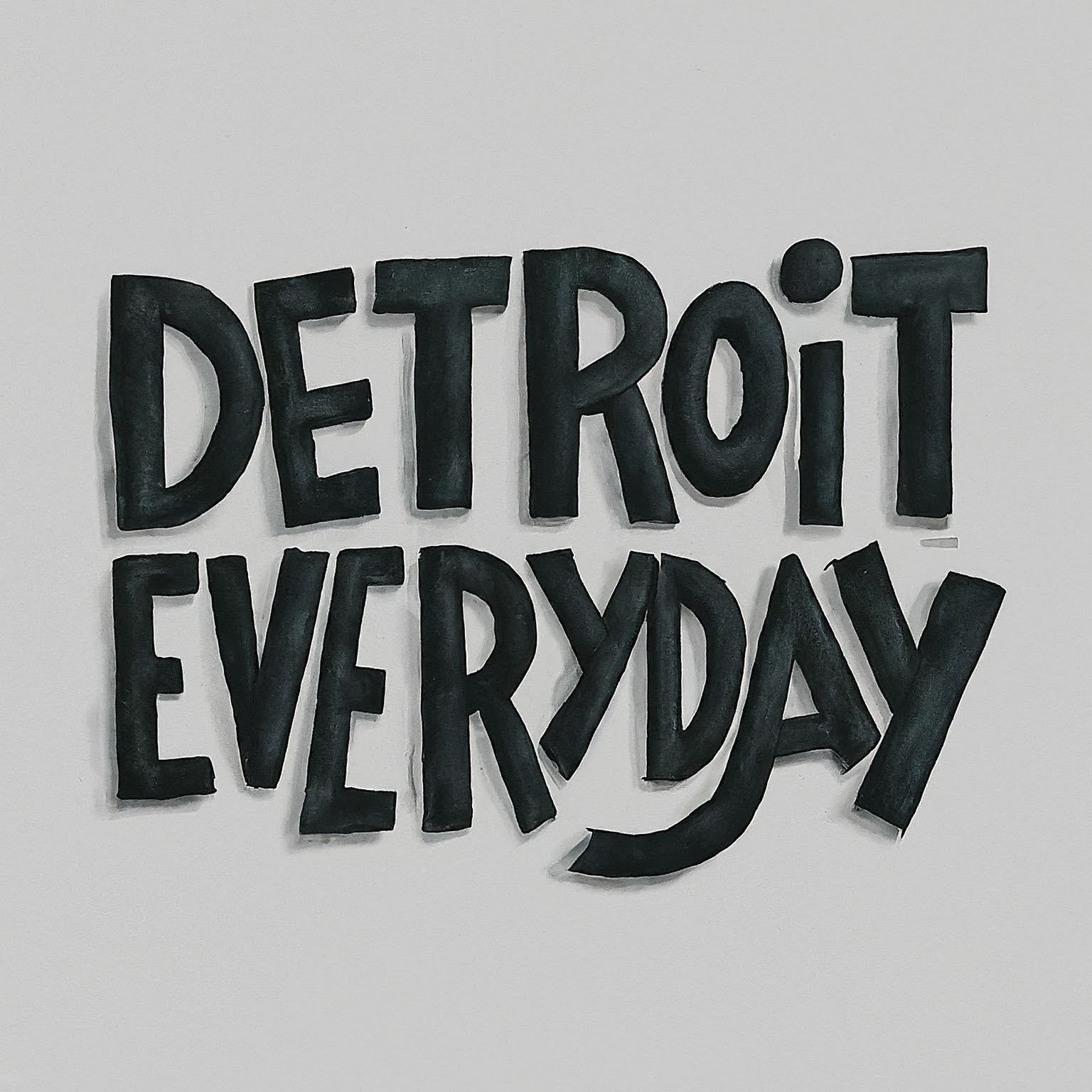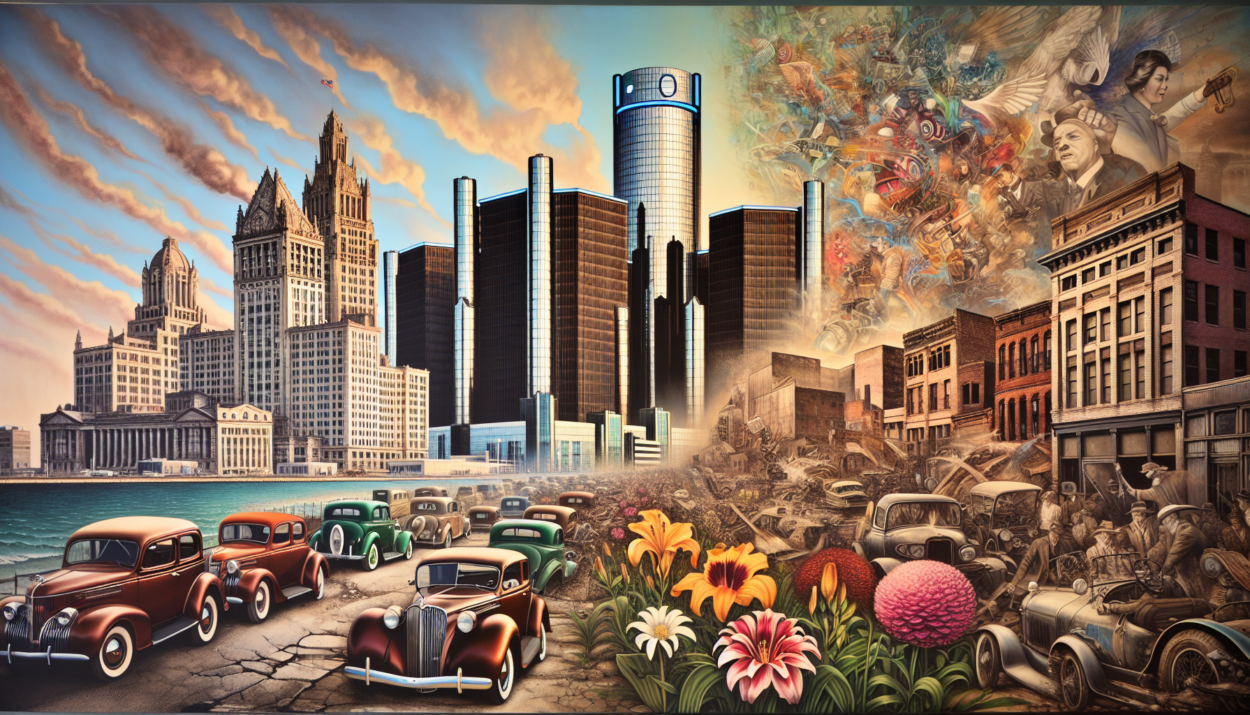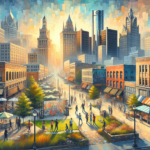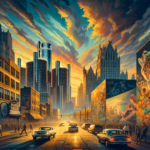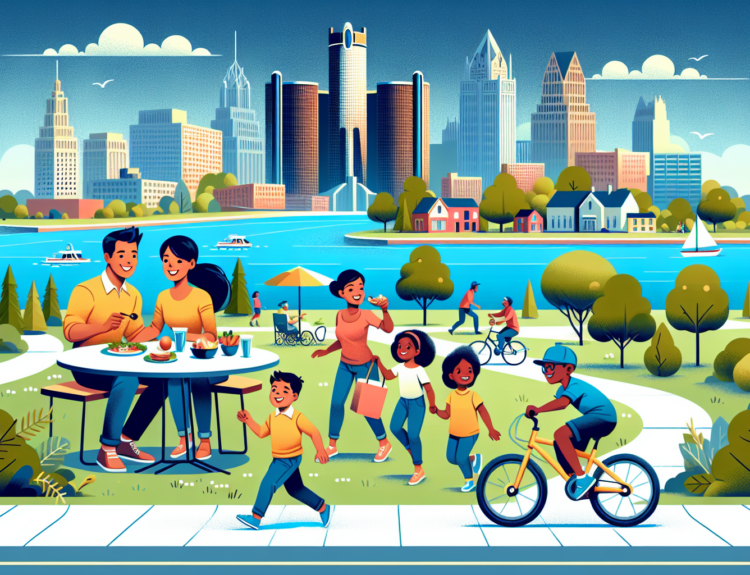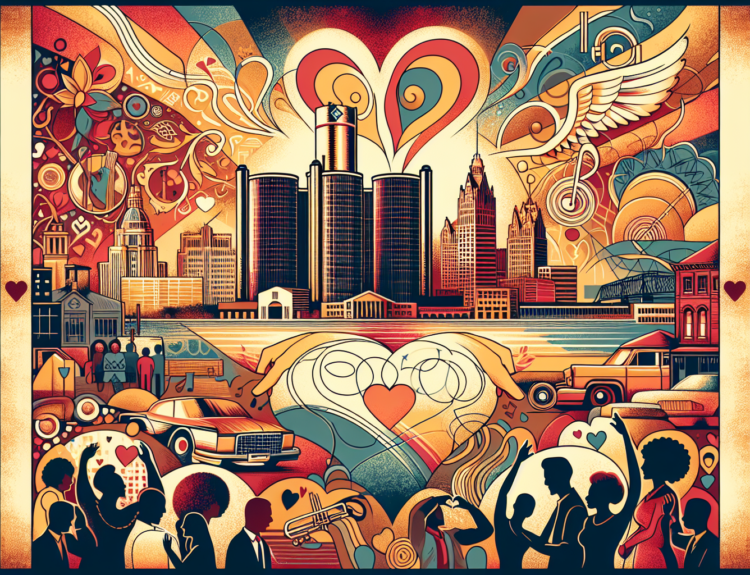Detroit: The City That Refuses to Stay Down
Ah, Detroit—the Motor City, the place where the echoes of the assembly line still resonate like a cacophony of ambition and resilience, mixed in with a dash of ennui. A city known for its rich history in the automotive industry, Motown music, and more recently, a renaissance that has folks from around the world scratching their heads, wondering how a place that once seemed down for the count could be on the verge of a comeback. Spoiler alert: it’s complicated.
The Historical Tapestry of Detroit
To understand Detroit today, we need to first buckle our seatbelts and drive back in time—preferably in a classic Cadillac, because nothing says “I’m a Detroiter” more than a car that could double as a living room. Established in 1701 by Antoine Laumet de la Mothe, sieur de Cadillac, Detroit has been a melting pot of cultures, ideas, and distinctive culinary experiments (we’ll get to the food scene later, I promise).
Throughout the late 19th and early 20th centuries, Detroit became a symbol of American industry and ingenuity. The advent of the automotive industry transformed it from a quaint fur trading post into the nursery of modern transportation. With Henry Ford’s assembly line innovation, the city quickly became the place to find work. And work it did, bringing waves of immigrants seeking the American Dream, all while the city was chugging along like the engines it built.
But alas, like a lot of good things, the dream became somewhat of a nightmare—cue the dramatic music. The 1967 riots, economic downturns, and white flight left Detroit in an unfortunate slump. By 2013, the city filed for bankruptcy, marking its place in history as the largest municipal bankruptcy in U.S. history. Ouch.
The Grit and Grind of Resilience
Now, if you think a little bankruptcy would keep Detroit down, you have another thing coming—Detroit is like that boxer who just refuses to stay down. Over the years, despite the gory headlines of Detroit news, the city has shown that it knows how to pick itself up by the bootstraps, or at least by the tattered remains of its last decent pair of shoes.
In recent years, we’ve seen an upsurge in investment and new businesses. Developers have slowly moved into the once-neglected neighborhoods, seeing potential where others saw blight. Local favorites like the Detroit Institute of Arts—a museum so stunning it makes the Louvre look like a garage sale—are not only pushing to preserve the rich cultural fabric of the city but have also become a central part of its revitalization strategy.
And how about the food scene? Let’s not forget about that. Detroit has transformed into a culinary hotspot with foodie spots popping up faster than you can say “coney dog.” You’ve got everything from the classic Detroit-style pizza—admit it, you’re drooling—to innovative food trucks that would make any hipster swoon. The city has embraced diversity on a plate like no other, and it’s a delicious change of pace.
Sports: The Heartbeat of the City
Ah, sports. If there’s anything that brings a collective tear to the eye of a Detroiter, it’s our sports teams. We ride or die with the Lions, Tigers, Pistons, and Red Wings as if our lives depend on it—because sometimes they do! Detroit news often features the latest on these teams, which is funny, considering the Lions have been knocking on the “next season will be our season” door since 1957. Some of us are still waiting for them to actually knock it down.
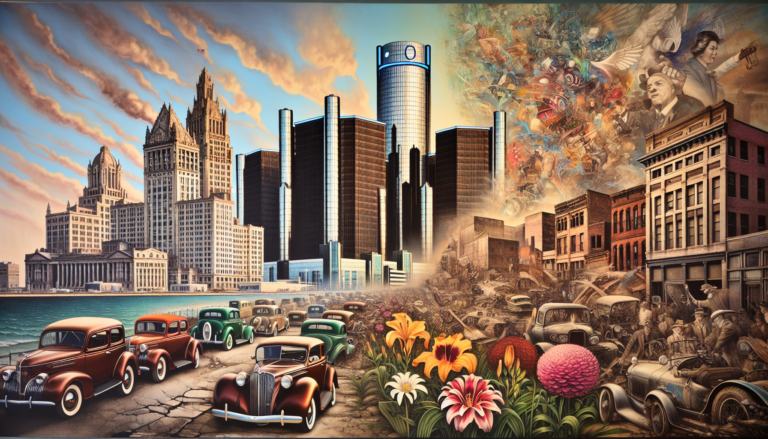
Even with the ups and downs, the fervor surrounding the sports teams serves as an emotional outlet for many—sort of like a therapy session where screaming at the television is completely acceptable. When the Tigers win, it’s as if the entire city throws a block party. On a bad day? We collectively mourn as if we lost a family member (or at least a favorite uncle).
The Arts and Culture Scene
Beyond the sports arena and the culinary delights, Detroit has an arts and culture scene that’s evolving into something spectacular. Downtown is littered with art installations that make you question your own creative abilities (no, I can’t draw a stick figure!). Events like Art Detroit Now and the Detroit Design Festival showcase local artistry, marrying the old with the new.
In case you were wondering, yes, our music scene is still legend-worthy. Motown, techno, and everything in between—Detroit is the birthplace of sounds that can make you dance or cry, depending on your mood. Don’t even get me started on the annual Detroit Music Festival, where, for three days, the streets become filled with tunes that hit you right in the soul.
Infrastructure: Upgrades on the Horizon
So here’s the thing: nothing says gentrification like fancy buildings popping up where you used to buy an $8 haircut. As revitalization continues, many areas in Detroit are experiencing infrastructural upgrades—think bike lanes, public transport improvements, and parks that don’t look like they just survived a horror movie.
The addition of the QLINE, Detroit’s streetcar system, has added another layer of connectivity, helping folks navigate the city while avoiding the potholes that could swallow a small car. And while we’re talking about potholes, are these craters something that’s exclusive to Detroit? I like to think they serve as a bonding experience, uniting residents in a shared hatred of poor infrastructure. “Did you dodge that pothole on Woodward?” is pretty much our “hello” these days.
Challenges Still Linger
Now, let’s keep it real for a hot minute. Detroit isn’t perfect—far from it, in fact. The socio-economic disparities, crime rates, and a fragmented education system taint the otherwise rosy narrative of rejuvenation. While the rich get richer, we have to ask, “What’s happening to the rest?”
We hear Detroit news reporting on the fight against homelessness and the division in wealth as gentrification continues to alter the landscape. Important questions loom, like, “Are our revitalization efforts inclusive, or are they just polishing the glass on a crumbling statue?” While we still have a long road ahead, the conversations have begun, and it’s crucial we keep pushing them.
The Future: A Bright Horizon?
As we look to the future, the question remains: what’s next for our beloved Detroit? There’s a palpable sense of optimism blooming in the streets. With a mix of fresh talent pouring in and seasoned locals refusing to leave, it’s like a delightful stew simmering on the stove—some flavors need to blend and sometimes bubble over, but it’s still tasty at the end of the day.
While we navigate the complexities of our social fabric, economic recovery, and infrastructural needs, it’s essential we embrace the identity of our city. We are a city that dances in the face of adversity, that understands the value of community, and doesn’t shy away from pulling on a pair of work boots and getting dirty.
Conclusion: Why We Love (and Sometimes Lean On) Detroit
So, why do we love this city? Perhaps it’s because it represents a human spirit that refuses to quit. Sure, we laugh in the face of danger, shrugging off bankruptcy and pitiful sports seasons in a way only Detroiters can. We’ve seen harder times than a bad hair day, and yet here we stand, resilient as ever. Detroit is not just a place on the map; it’s a feeling—like coming home after a long trip or finding a forgotten $20 bill in your winter coat.
In the words of a much wiser person, “What doesn’t kill you makes you stronger.” And let me assure you, Detroit has been through the wringer and is still standing, albeit with a few dents and scratches. So, here’s to Detroit: the city that’s as complex as a multi-layered deep-dish pizza and just as satisfying!
Join our email list to stay updated on the latest news and exciting prizes!
